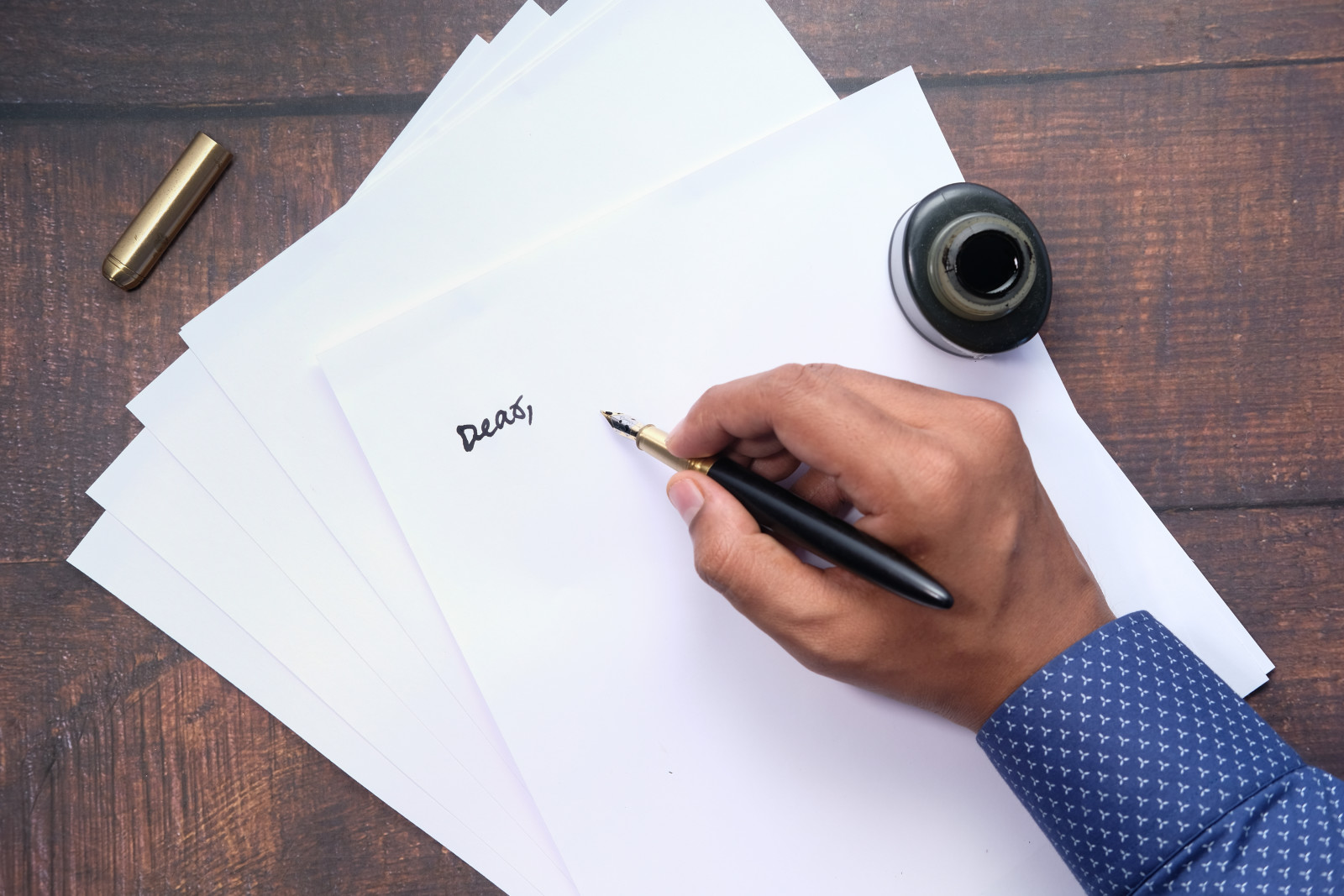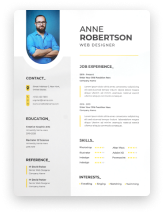Introduction
In today's competitive job market, the way you conclude your cover letter can be just as crucial as its opening. A well-crafted closure not only reinforces your candidacy but also leaves a lasting impression on hiring managers. This guide is your key to mastering the art of ending a cover letter effectively. Here, you'll uncover a wealth of strategies, examples, and expert tips designed to elevate your job application and highlight your professional strengths. Whether you're a seasoned professional or a newcomer to the job market, these insights will help you tailor your cover letter's closing to your unique strengths and the specific requirements of your desired role.

Understanding the Importance of a Strong Cover Letter Closure
The closure of your cover letter is not just a formality; it's a strategic tool. This concluding part plays a pivotal role in how your application is perceived. It's your final opportunity to underscore your enthusiasm for the position, affirm your suitability, and leave a memorable impression. A compelling closure can transform a standard application into an irresistible call for an interview.
Overview of What Will Be Covered in the Article
This article delves into the intricacies of crafting an impactful cover letter closure. We'll explore the anatomy of a cover letter with a focus on the closing section, discuss setting the right tone, and provide effective strategies for crafting a persuasive ending. We'll also offer customization tips, examples of strong closing statements, and common mistakes to avoid. Moreover, the article will guide you through the formatting, the art of following up, and integrating SEO strategies. Finally, we'll address frequently asked questions and conclude with a summary of key takeaways.
The Anatomy of a Cover Letter
Breaking Down the Cover Letter Structure
A cover letter is more than just a document; it's your narrative pitch. Structurally, it consists of an introduction, body, and closure. Each segment serves a distinct purpose:
-
Introduction: Grabs the reader's attention.
-
Body: Highlights your relevant skills and experiences.
-
Closure: Leaves a lasting impression and compels the reader to action.
Focusing on the Closing Section
The closing section, often overlooked, is where you wrap up your arguments and make a final appeal to the employer. It's your last chance to emphasize why you're the perfect fit for the role. This section should be concise, yet powerful, and aligned with the tone and content of the preceding sections.
Setting the Right Tone
How Tone Can Impact Your Closing
The tone of your cover letter's closing can significantly influence the reader's perception. It should align with the company's culture and the nature of the job. For instance, a creative role might welcome a more daring tone, while a corporate position might require a more reserved approach. The key is to strike a balance between professionalism and personality, ensuring that your enthusiasm and fit for the role shine through.
Balancing Professionalism and Personality
Your closing should reflect a blend of your professional demeanor and personal flair. While maintaining formality, infuse a bit of your personality to make your closing memorable. This could be a brief mention of your passion related to the job or a concise, clever comment that showcases your character.
Effective Closing Strategies
Summarizing Your Qualifications
A compelling closure succinctly reinforces your key qualifications. Recapitulate the skills and experiences that make you an ideal candidate. This recap should be a natural conclusion of the narrative you've built throughout your letter, focusing on how your attributes align with the job requirements and the company's values.
Reiterating Your Interest in the Position
Express your genuine interest in the role and the company. Make it clear that you're not just looking for any job, but specifically this position at this organization. A statement that resonates with the company's mission or goals can demonstrate that you're not only a good fit for the role but also invested in what the company stands for.
Example of reiterating interest in a closing statement:
"I am particularly excited about the opportunity to contribute to [Company's] innovative approach to [industry-specific challenge], a mission that deeply resonates with my professional values and experience."
The Art of Persuasion
Persuasive Techniques for Your Final Paragraph
Persuasion in your closing paragraph involves subtly convincing the hiring manager of your potential value to the company. Use assertive language that projects confidence in your abilities. Employ rhetorical strategies such as direct appeals to the reader's needs, highlighting how your skills can solve specific problems they face.
Encouraging a Call to Action
A well-crafted call to action (CTA) in your closing encourages the hiring manager to take the next step. This could be inviting them to contact you for an interview or suggesting a meeting to discuss your potential contributions in more detail. Ensure your CTA is clear, direct, and appropriate for the position you are applying for.
Effective Call to Action Example:
"I look forward to the opportunity to discuss in person how my skills and experiences align with [Company's] current needs. May I suggest a meeting next week to explore this further?"
Customizing Your Closure
Tailoring Your Ending to Different Industries
Different industries have varying norms and expectations for cover letter closings. For example, a creative industry might appreciate a more innovative and bold closing, while a legal or financial firm might prefer a more traditional and conservative approach. Research the industry standards and tailor your closing accordingly to resonate with the specific audience.
Adjusting the Tone for Various Company Cultures
The culture of a company should significantly influence the tone of your closing. A startup with a casual, innovative culture may welcome a more relaxed and creative tone, while a large, established corporation might expect a more formal approach. Tailor your language and closing style to reflect the company's culture, as evident from their website, social media presence, and industry reputation.
Customizing Your Closure
Tailoring Your Ending to Different Industries
Different industries have varying norms and expectations for cover letter closings. For example, a creative industry might appreciate a more innovative and bold closing, while a legal or financial firm might prefer a more traditional and conservative approach. Research the industry standards and tailor your closing accordingly to resonate with the specific audience.
Adjusting the Tone for Various Company Cultures
The culture of a company should significantly influence the tone of your closing. A startup with a casual, innovative culture may welcome a more relaxed and creative tone, while a large, established corporation might expect a more formal approach. Tailor your language and closing style to reflect the company's culture, as evident from their website, social media presence, and industry reputation.
Examples of Strong Closing Statements
Professional and Conservative Examples
For traditional or conservative industries, your closing statement should be professional, respectful, and to the point. A straightforward expression of gratitude for the opportunity and a reaffirmation of your interest can be very effective.
Conservative Closing Example:
"I appreciate the opportunity to apply for [Position] at [Company]. I am eager to bring my expertise in [relevant skill] to your team and am looking forward to the possibility of discussing my application in more detail."
Creative and Bold Examples
In more creative fields, you have the liberty to be more adventurous with your closing. A bold statement that showcases your creativity and enthusiasm can make you stand out.
Creative Closing Example:
"Joining [Company] would be a dream come true for me, where I can blend my passion for [relevant skill] with my desire to innovate. I am excited about the prospect of contributing to your team's success in new and dynamic ways."
Common Mistakes to Avoid
Overused Phrases and Clich 茅 s
One key mistake is relying on overused phrases and clich 茅 s. Phrases like "I look forward to hearing from you" or "Thank you for your consideration" can sound insincere because of their frequent use. Instead, opt for more original expressions that convey your interest and enthusiasm more authentically.
Incorrect Example:
"Thank you for your consideration. I hope to hear from you soon."
Being Too Forward or Aggressive
Another mistake is being too forward or aggressive in your closing. Avoid statements that presume positive outcomes, such as expecting an interview. This can come off as presumptuous or disrespectful of the hiring process.
Incorrect Example:
"I will call next week to schedule an interview."
The Sign-Off
Choosing the Right Sign-Off Phrase
The sign-off is the final element of your cover letter, and choosing the right phrase is crucial. It should be professional and match the tone of your letter. Common sign-offs include "Sincerely," "Best regards," and "Respectfully." Avoid overly casual sign-offs like "Cheers" or "Best wishes," which might not be suitable for all types of job applications.
Sign-Off Etiquette Tips
When signing off, always include a comma after your chosen phrase, followed by your name on the next line. If you're submitting a hard copy or a PDF, consider including a handwritten signature above your typed name for a personal touch.
Appropriate Sign-Off Example:
Best regards, [Your Name]
Formatting Your Closure
Visual Presentation of the Closing Section
The visual presentation of your closing section is as important as its content. Ensure that it aligns with the overall format of your cover letter. This includes consistent font type and size, margins, and spacing. Your closing should start a couple of lines below the last paragraph of the body of your letter.
Alignment with the Overall Letter Format
Maintain uniformity in the formatting style throughout the letter. If your letter uses a particular header style or bullet points, the closing should seamlessly integrate with these elements. Consistency in formatting not only looks professional but also demonstrates your attention to detail.
Formatting Example:
[Body of the Letter]
[Two-line space]
[Closing Statement]
[Four-line space for signature, if physical copy]
Best regards,
[Your Name]
Following Up After Sending Your Cover Letter
Appropriate Timing for Follow-Ups
Timing is key when following up on your cover letter. Typically, a period of one to two weeks is appropriate. This gives the hiring manager enough time to review your application without feeling pressured. However, if the job posting specifies a deadline for decisions, respect that timeline before reaching out.
How to Craft a Follow-Up Message
Your follow-up message should be concise, polite, and professional. Remind the recipient briefly of your application and express continued interest in the position. It's also a good opportunity to reiterate any significant points that align your qualifications with the job requirements.
Follow-Up Message Example:
Subject: Follow-Up on [Position] Application
Dear [Hiring Manager's Name],
I hope this message finds you well. I am writing to kindly follow up on my application for [Position] submitted on [Date]. I am very enthusiastic about the opportunity to contribute to [Company] and would love the chance to bring my [specific skills] to your team.
Thank you for considering my application. I look forward to the possibility of discussing it further.
Sincerely, [Your Name]
Using the P.S. Section Effectively
The Power of a Postscript in a Cover Letter
A postscript (P.S.) in a cover letter can be a powerful tool. It's often read after the main content and can serve to highlight a key point or add a personal touch. Use the P.S. to reinforce your enthusiasm, mention a crucial qualification, or share something unique that aligns with the company's culture or values.
Examples of Impactful P.S. Statements
An effective P.S. should be brief and relevant. It could be an additional accomplishment that aligns with the job requirements, a personal connection to the company's mission, or an expression of your passion for the role.
Impactful P.S. Example:
P.S. I was thrilled to see [Company] has initiated [specific project or initiative]. Having led a similar project at my previous job, I'm excited about the possibility of contributing my expertise in this area.
Feedback and Revision
Seeking Feedback on Your Closing Statement
After drafting your closing statement, it's wise to seek feedback. This could be from mentors, professional contacts, or career counselors. They can provide valuable insights on how your closing comes across and suggest improvements. Feedback is crucial for ensuring your closing is impactful, appropriate, and free of errors.
Revising Based on Input
Use the feedback you receive to refine your closing statement. Pay attention to suggestions on tone, clarity, and persuasiveness. Revisions should focus on making your closing more impactful, ensuring it aligns with the rest of your cover letter, and is tailored to the job and company you're applying to.
Expert Tips for a Memorable Closure
Insights from Hiring Managers and Recruiters
Hiring managers and recruiters often emphasize the importance of a strong closing in a cover letter. They suggest highlighting your unique value proposition and how it aligns with the company's needs. An effective closure should leave the reader with a clear understanding of why you are a compelling candidate for the position.
Advanced Techniques for a Standout Ending
Consider using storytelling or an engaging anecdote that connects your experiences to the job role. This can make your closure more memorable. Additionally, using subtle flattery about the company, such as praising its achievements or culture, can be effective if done sincerely and appropriately.
Integrating Keywords and SEO
Understanding SEO in the Context of Job Applications
In the digital age, understanding the role of Search Engine Optimization (SEO) in job applications is crucial. Many companies use Applicant Tracking Systems (ATS) to scan cover letters and resumes for specific keywords related to the job. Therefore, integrating relevant keywords into your cover letter, especially in the closing, can increase the chances of your application being noticed.
Incorporating Relevant Keywords into Your Closure
Identify key terms from the job description and integrate them naturally into your closure. This might include specific skills, qualifications, or industry jargon. However, avoid overstuffing your letter with keywords; they should fit seamlessly into your narrative.
Cover Letter Closure in the Digital Age
Adapting Traditional Techniques for Email and Online Applications
In the digital age, the format and delivery of your cover letter might differ, but the principles of a compelling closure remain the same. For email applications, ensure that your closing is concise and includes a professional email signature with your contact information. Online applications may have specific instructions or character limits, so tailor your closure accordingly.
The Role of Digital Professionalism
Digital professionalism extends to your email address, subject line, and overall presentation of your email or online application. Use a professional email address, a clear and specific subject line, and ensure that the formatting of your cover letter translates well in digital form.

FAQs
Q: How long should the closing of a cover letter be?
A: The closing of a cover letter should typically be brief, ideally around three to four sentences. It should be long enough to reiterate your interest, summarize your qualifications, and include a call to action, but concise enough to maintain the reader's attention.
Q: Is it necessary to include a call to action in the closing?
A: Including a call to action in your closing is recommended as it encourages the employer to respond. It can be a simple invitation for further discussion, a request for an interview, or a statement indicating that you will follow up.
Q: What are some creative ways to end a cover letter?
A: Creative closings can include a compelling quote that reflects your professional philosophy, a brief mention of a unique personal connection to the company or its mission, or an innovative statement that showcases your creativity and aligns with the role you're applying for.
Q: Can humor be used in a cover letter closure?
A: Humor should be used cautiously in a cover letter closure. If you choose to use it, ensure it is appropriate, subtle, and aligns with the company's culture. It's important to remember that humor can be subjective and may not always translate well in written form.
Q: How do I know if my closing is too aggressive or too passive?
A: Your closing is too aggressive if it makes assumptions about the next steps, like presuming an interview. It's too passive if it fails to express your enthusiasm or interest in the role. Aim for a balance that shows eagerness and respect for the employer's decision-making process.
Conclusion
Summing Up the Key Takeaways
Crafting an effective closing for your cover letter is crucial in making a lasting impression. Remember to succinctly summarize your qualifications, express genuine interest, and include a call to action. Tailor your closing to the industry, company culture, and maintain professional etiquette. Avoid common mistakes like clich 茅 s or being overly aggressive. Finally, consider the digital context of your application, integrate SEO wisely, and always be open to feedback and revision.
Encouraging Readers to Apply These Tips
We encourage you to apply these tips in your next cover letter. An impactful closing can differentiate your application from others and significantly increase your chances of landing an interview. Remember, your closing is your final opportunity to communicate your enthusiasm and suitability for the role.
Recommended Reading









